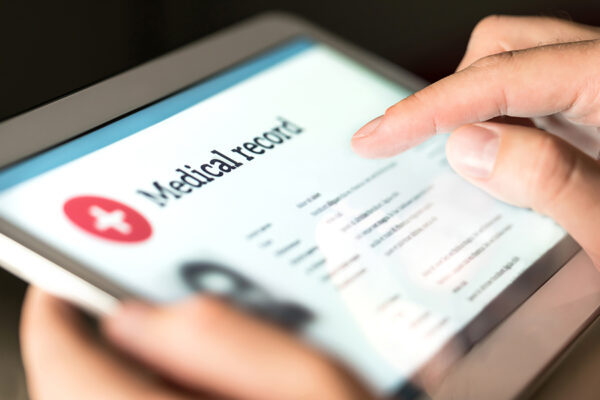
A Resource Guide to Entering the Healthcare Technology Industry

If you’re considering a career in the healthcare technology space, you’ve come to the right place. But we must say, healthcare is a sensitive business in which mistakes have a high cost. A single error in medical records can cause fatalities. Medical errors in the U.S. have caused more than 250,000 as per a John Hopkins study. Whether it is a pharmacy, a hospital, a nursing home, a specialty clinic, or a laboratory, being a successful part of the healthcare technology industry starts with gaining an understanding of how the sector works.
In this article, I am presenting you with a learning path that will help you:
- Understand how you can develop foundational knowledge about how the healthcare sector in the U.S. works
- Understand industry terminologies, functions, processes, and challenges in healthcare
- Identify areas of opportunities where your technology can help a client
- Put your knowledge to the test with practice resources
Let us start our journey.
Step 1: Start with the Basics
As a novice, sifting through the sea of resources on the internet may become overwhelming. So, here I give you my first list of sources that you can use to learn the basics of healthcare. You might not have to go through the entire course unless you want to fetch a certification but scanning a few videos will still be enough for you to understand the system.
However, if you want to do more than just discover the meanings of major terminologies and gain an understand of the embedded logic behind them, this course can be a fantastic resource. The professor takes you through each concept in detail with examples to ease your comprehension.
Online Course: Introduction to Healthcare
Publisher: Coursera
You might have some understanding of how the healthcare system works in the U.S., but you might not know how different healthcare units, people, and processes are connected. In this foundational course on healthcare, Stanford professor Laurence Baker takes you through the basics including discussions about:
- Providers
- Practices
- Hospitals
- Payers
- Healthcare services
- Insurance
- Government programs
- Prescription drugs
- Healthcare quality
- Healthcare issues
This course doesn’t go deep into each of these topics, but it gives you the tapestry of the entire system for you to figure out connections and understand healthcare language. The Coursera platform also allows you to have peer discussions on topics that you might find difficult to comprehend.

Online Course: Healthcare Management & Managers: Roles & Responsibilities
Publisher: Study.com
This basic course takes you through the details of how healthcare managers work at a hospital. It features short, animated videos, each covering the basics of hospital management for a layman learner. After every video, participants can take a quiz that helps you check if you have understood the basics.
The course introduces you to basic terminologies like HMOs (Healthcare Maintenance Organizations), PPOs (Preferred Provider Organizations), and HSAs (Health Savings Account) that healthcare providers and payers may use in their conversations, making it easy for you to understand when your customer is talking.
Course: Value-based Care: Reimbursements
Publisher: Coursera
This course gives you a high-level view of the healthcare payment mechanisms with popular models like fee-for-service, Medicare, and Medicaid explained. The course also has a section on coding systems of healthcare such as HCPCS (Healthcare Common Procedure Codes) and NDC (National Drug Code) that helps in the identification of the services, practitioners, drugs, and products.
Course: Economics of Healthcare Delivery
Publisher: Coursera
This course gives you the structure of health insurance, explains the economics behind the pricing strategies of payers, and discusses alternative payment methods based on per capita costs used by insurance organizations for high-value care. You will discover the factors that determine the amount to be paid to providers and understand the distribution of risk between providers, payers, and patients.
Step 2: Data-Driven Healthcare Technology
Once you are familiar with the basics of the healthcare industry, you are ready to start identifying opportunities where you can play a role in shaping healthcare with technology. There are many applications of technology in healthcare today. Data can be a great way to start.
Every healthcare organization generates data and must manage it well to stay streamlined in its operations. Data can be generated from clinical, biometric, financial, research or personal activities of patients. Providers use it to generate insights and even make predictions about health outcomes. Data is one area in the healthcare system that can help you find opportunities for growth. It is a low-hanging fruit that you can capture to make an entry into a healthcare system as a software development organization.
Website: Healthcare IT News
Digital healthcare, healthcare analytics, patient-centered care, virtual care or telehealth, and connected devices are some of the popular stories you can find on this industry-leading news website. Remote patient monitoring—the backbone of telehealth consultation—is now among the top three focus areas of healthcare as suggested on the portal. Flip through the stories on this website and you will learn about trending topics in the healthcare technology space, which organizations are making big moves, and much more.
Article: A Framework for Designing Excellent Virtual Healthcare
Publication: Harvard Business Review
This HBR article on virtual health care points out the traditional visit process and shows a clear contrast of how it looks in the virtual space. The technological foundation on which to build these virtual systems is also briefly covered in the article. The article will help you understand the virtual care system from patients’ and providers’ perspectives.

Book: Health Informatics and Analytics: Emerging Issues and Trends, an IGI reference book co-authored by Madjid Tavana, Amir Hossein Ghapanch, and Amir Talaei-Khoei
What is inside: The book covers the topic of health informatics which is one major area of development that supports hospitals in decision making, pharmacies in management, and hospitals in supporting patients virtually. The book covers insights on healthcare information systems, decision support systems, informatics, virtual health technologies, telemedicine, and rehabilitative technologies. Some highlights of the book are:
- Understanding of emotional needs of patients to inform technological solutions
- Analysis of clinical interactions between providers and patients
- Overview of healthcare environments that affect patients and providers
- Perspectives on Business Process Redesign and Management with an analytical lens
- Discussions on the concepts of Electronic Medical Records (EMR) & Patient Health Records (PHR)
The most widespread application of technology in healthcare is Electronic Health Records (EHRs) of the patient which contain huge volumes of data. Thus, it is essential to understand how data works in a healthcare system.

Book: The Healthcare Data Guide: Learning from Data for Improvement by Lloyd P. Provost and Sandra K Murray
What is inside: Patient data is the cornerstone of the healthcare industry. It not just helped organizations understand the patient’s health needs and outcomes, but also improves their care practices to enhance care delivery. It answers some major questions that providers have on data like:
- What methods can I use to analyze healthcare data?
- What graphs do I use to understand health events?
- How do I display organizational data to leaders?
- How do I interpret patient data rightly?
- What measures can help me improve healthcare projects?
If we talk about improvement in healthcare systems, another great learning resource has been provided by UC Davis on Coursera under the Healthcare Information Literacy for Data Analytics Specialization.
Online Course: Healthcare Data Literacy
Publisher: Coursera
What can you improve in healthcare? Reduce rising costs, bridge the service gaps, improve patient management, or improve the whole system? In this course, you will find answers to these concerns, revisit medical terminologies, and understand how clinical, administrative, and genomic data can be used to create knowledge. Concepts of data integration, mapping, and harmonization are some more highlights. The course will help you build foundations of data journey in healthcare and is ideal for those with interest in health data science.
Book: Big Data in Healthcare by Farrokh Alemi
What is inside: This is an advanced material that will help you understand how you can use statistical analysis to create insights from health data records. Specific statistical models like regression, propensity scoring, control charts, and multilevel modeling are covered with specific examples of EHRs, The SQL codes provided will help you practice what you have learned to get a first-hand experience of working with healthcare data.
Step 3: Put it to the Test
If you follow the resources recommended above, you will gain basic knowledge of healthcare data and applications of healthcare analytics. Time to go deep. Let’s put what you’ve learned to the test with some practice materials.

Database: Clinical Database
Publisher: Physionet
From this portal, you can download datasets from the MIMIC-III clinical database for practice. The source contains archives from hospital records, social security administration, and critical care information systems. The dataset contains details like physiological measurements, progress notes, medications, demographics, laboratory test results, discharge summaries, and diagnostics.
Database: Patient Medical Records
Publisher: Mitre Corporation
This source provides samples of patient records in different formats. Synthetic records are uploaded with 1k sample size while data specific to COVID-19, Obesity, Oncology, etc. are varied in data volumes. You might want to try downloading COVID-19 data of ten thousand synthetic patients from this website and start your analytics practice.
You can also explore more of health informatics by going through YouTube playlists of Health Informatics Forum.
Starting Your Career in Healthcare Technology
The American healthcare system is a powerful engine capable of accelerating humans’ quality of life. Technology has made it even stronger. The medtech industry has been steady growing for years with no signs of slowing down. Now is an exciting time to break into the business. Let us recap your learning pathway to breaking into the healthcare technology and/or medtech space: creating healthcare solutions:
Step 1: Preliminaries of Healthcare
Step 2: Data-Driven Healthcare Technology
Step 3: Put it to the Test
Starting a new career can be challenging—especially in one as high-pressure as healthcare. Arming yourself with knowledge can help give you confidence enough to begin your journey.
To learn more about technology’s role in the healthcare industry, check out Apexon’s healthcare expertise or get in touch using the form below.